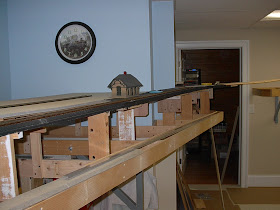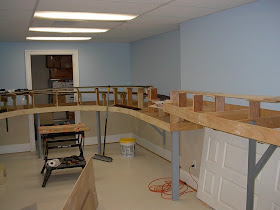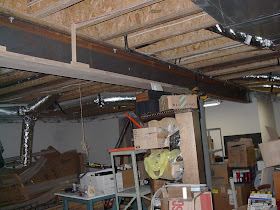


As we said in the previous post, as you turned the far corner, you would reach Paxinos. You can see that the benchwork and the track has a nice curve as it makes the corner and continues up the hill to Paxinos. The grade is 2%. I painted all the subroadbed black to represent the cinders you see under the ballast back in the steam era. After I build the track to Paxinos, I have to go back and build all the sidings in Reed and Crowl. I also have to finish the bridge over the main line. We now have a run of about 75 feet from the yard. The railhead is currently at Paxinos but we will push on shortly. One last point, right at the point, a water tank will be placed that was at Shamrock. The engines uncoupled from their trains at Crowl and went up the single track to Shamrock, watered and came back to their train. It will be nice to duplicate that in our operations.





























